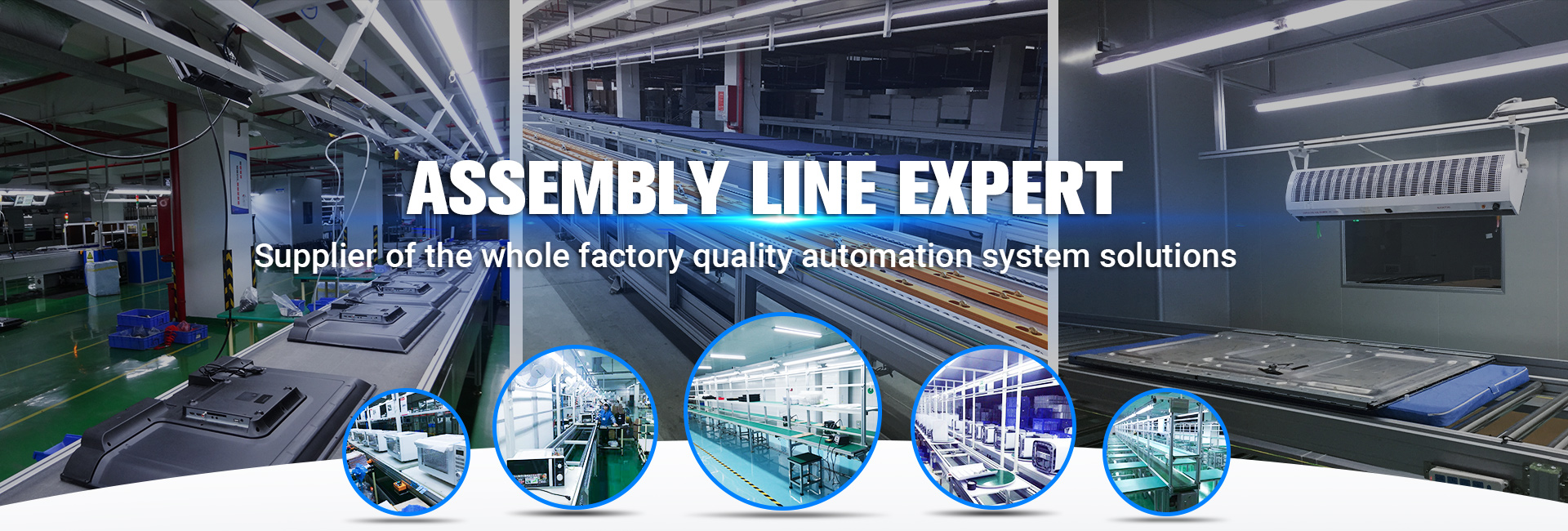The chain plate production line equipment is easy to clean, and the line body can directly wash the surface of the equipment with water (but it should be noted that the power part and the control part cannot be washed with water, so as to avoid damage to internal parts, electric shock, and accidents.) To make the service life of the equipment reach Maximum, maintenance and maintenance is the key.
As a product with high function and high cost performance among many conveying equipment, the chain plate conveyor is deeply loved by the majority of users. Chain conveyors are widely used in food, beverage, electronics, electrical appliances and light industry industries. The chain conveyor has a very flexible conveying form, which can fully and effectively utilize the space. It can be designed to be used alone in various models, and can be easily matched with other conveying equipment. It can be seen that the chain plate conveyor is an important conveying equipment in the assembly line. Today, Wuxi Sanrui Technology Co., Ltd. will share with you the general daily maintenance and maintenance of the lower chain plate conveyor.
1. The chain conveyor should be supervised by fixed personnel during the working process. The guards must have general technical knowledge and be familiar with the performance of the conveyor.
2. Enterprises should formulate “equipment maintenance, overhaul, and safety operation procedures” for chain conveyors so that caregivers can follow them. Caregivers must have a shift system.
3. The feeding to the chain plate conveyor should be uniform, and the feeding hopper should not be filled with material and overflow due to excessive feeding.
4. When taking care of the conveyor, you should always observe the operation of each component, check the connecting bolts everywhere, and tighten them in time if they are loose. However, it is absolutely forbidden to clean and repair the running parts of the conveyor when the conveyor is running.
5. During the working process of the chain conveyor, non-custodial personnel are not allowed to approach the machine; no personnel are allowed to touch any rotating parts. When a fault occurs, the operation must be stopped immediately to eliminate the fault. If there are defects that are not easy to be eliminated immediately but have no great influence on the work, they should be recorded and eliminated during maintenance.
6. The screw tensioning device assembled at the tail should be adjusted appropriately to keep the conveyor belt with normal working tension. The caretaker should always observe the working condition of the conveyor belt, and if the parts are damaged, they should decide whether to replace it immediately or replace it with a new one when it is overhauled, depending on the degree of damage (that is, whether it has an impact on production). The removed conveyor belt should be used for other purposes depending on the degree of wear.
7. When taking care of the chain conveyor, it is to observe its working state, clean, lubricate, and check and adjust the sporadic work of the screw tensioning device.
8. Generally, the chain conveyor should start when there is no load, and stop after the material is unloaded.
9. In addition to maintaining normal lubrication and replacing individual damaged parts during use, the chain conveyor must be overhauled every 6 months. During maintenance, the defects in use and records must be eliminated, the damaged parts must be replaced, and the lubricating oil must be replaced.
10. The enterprise can formulate the maintenance cycle according to the working conditions of the conveyor.
Generally speaking, the motor of the power part needs to be replaced in time after a year of use to ensure that the motor is in the best operating state and reduce internal losses. Usually, after the chain plate production line equipment is used up, the power supply should be turned off in time, and the surface of the equipment should be cleaned for a period of time. When the equipment needs maintenance, it should be maintained by professional equipment personnel, and non-related personnel should not do it, so as to avoid unnecessary economic losses and safety accidents. When the equipment fails, blind inspection and maintenance should not be performed, and professional engineers should be allowed to perform inspection and maintenance.
Post time: Aug-03-2022



